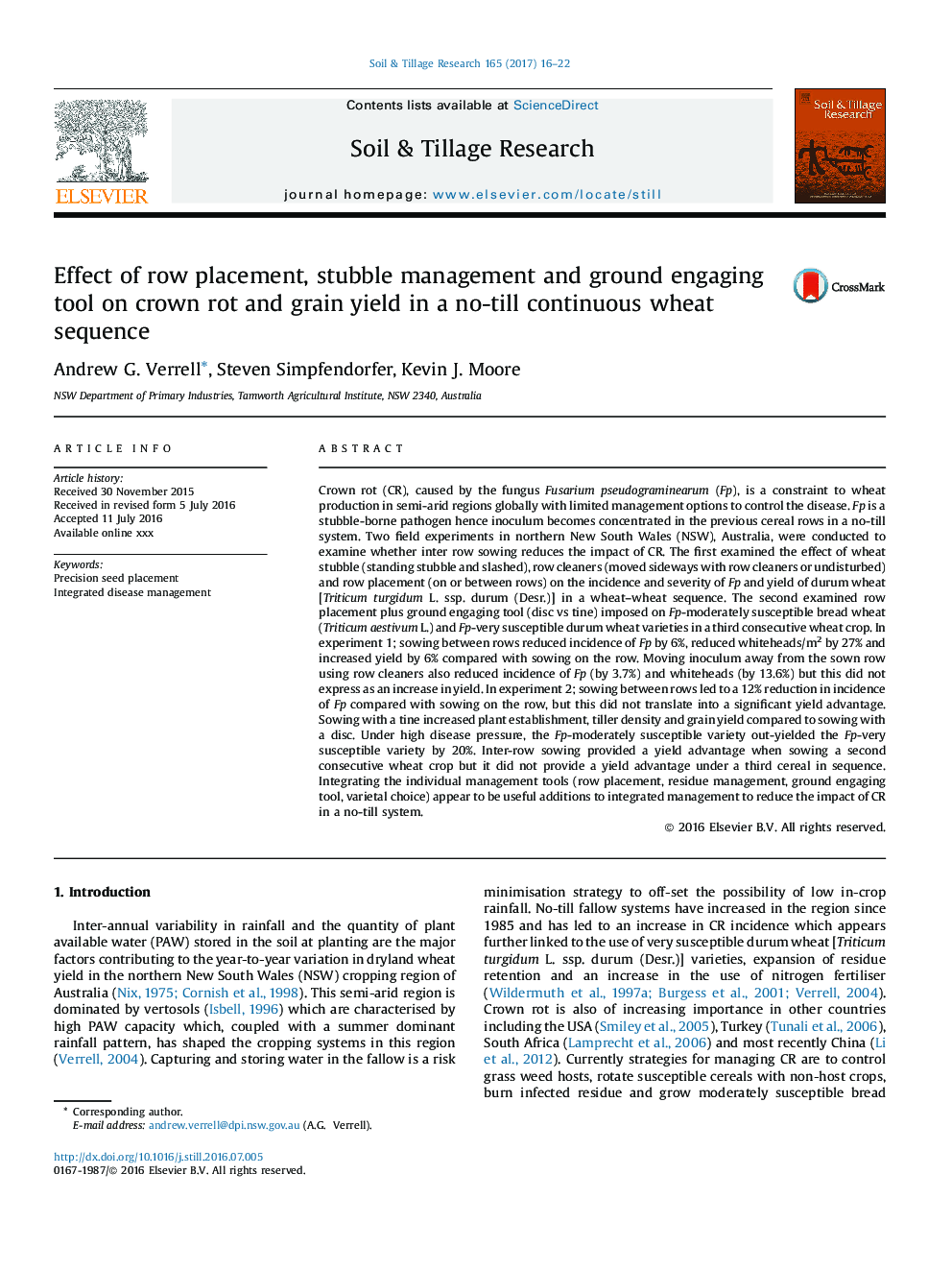| Article ID | Journal | Published Year | Pages | File Type |
|---|---|---|---|---|
| 305320 | Soil and Tillage Research | 2017 | 7 Pages |
•We explored the effect of stubble management on crown rot (CR) in zero-till farming systems.•Inter-row sowing reduced CR and increased grain yield (by 6%) in a 2nd wheat crop.•Using straw whippers reduced the incidence and severity of CR.•Inter-row sowing in a 3rd consecutive wheat crop did not reduce CR or increase yield.•Using a tyne reduced the incidence of CR and increased grain yield over a disc opener.
Crown rot (CR), caused by the fungus Fusarium pseudograminearum (Fp), is a constraint to wheat production in semi-arid regions globally with limited management options to control the disease. Fp is a stubble-borne pathogen hence inoculum becomes concentrated in the previous cereal rows in a no-till system. Two field experiments in northern New South Wales (NSW), Australia, were conducted to examine whether inter row sowing reduces the impact of CR. The first examined the effect of wheat stubble (standing stubble and slashed), row cleaners (moved sideways with row cleaners or undisturbed) and row placement (on or between rows) on the incidence and severity of Fp and yield of durum wheat [Triticum turgidum L. ssp. durum (Desr.)] in a wheat–wheat sequence. The second examined row placement plus ground engaging tool (disc vs tine) imposed on Fp-moderately susceptible bread wheat (Triticum aestivum L.) and Fp-very susceptible durum wheat varieties in a third consecutive wheat crop. In experiment 1; sowing between rows reduced incidence of Fp by 6%, reduced whiteheads/m2 by 27% and increased yield by 6% compared with sowing on the row. Moving inoculum away from the sown row using row cleaners also reduced incidence of Fp (by 3.7%) and whiteheads (by 13.6%) but this did not express as an increase in yield. In experiment 2; sowing between rows led to a 12% reduction in incidence of Fp compared with sowing on the row, but this did not translate into a significant yield advantage. Sowing with a tine increased plant establishment, tiller density and grain yield compared to sowing with a disc. Under high disease pressure, the Fp-moderately susceptible variety out-yielded the Fp-very susceptible variety by 20%. Inter-row sowing provided a yield advantage when sowing a second consecutive wheat crop but it did not provide a yield advantage under a third cereal in sequence. Integrating the individual management tools (row placement, residue management, ground engaging tool, varietal choice) appear to be useful additions to integrated management to reduce the impact of CR in a no-till system.
